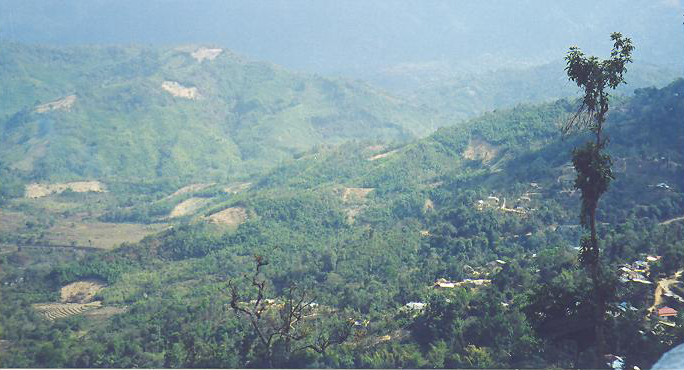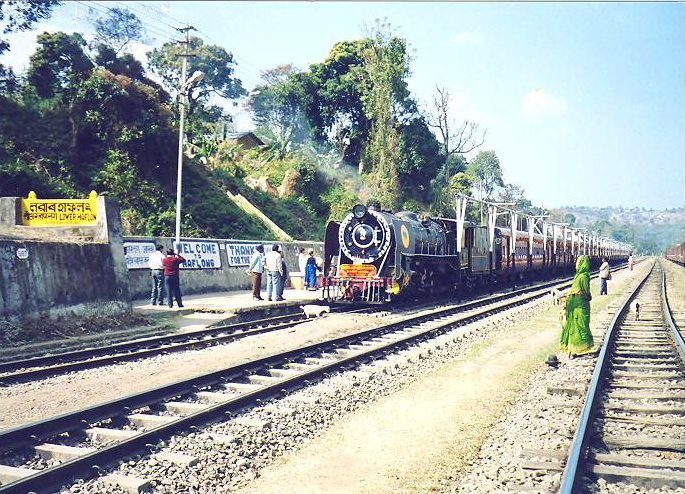Exploring nature in Haflong hills
Tourists visiting India often tend to stick to the traditional hotspots – Delhi, Agra, the palaces and forts of Rajasthan, and if time permits, a more varied cuisine and cultural tour through states in the South such as Kerala. However, for those looking for offbeat destinations, Haflong is an ideal getaway for some relaxation and rejuvenation.
For 50-year-old Dipika Dey, Haflong is a canvas of nostalgia. She fondly remembers the carefree years she spent here as a child and was ecstatic to finally be able to visit again around three years ago.
“I met up with a few of my childhood friends here and had a picnic while we just laughed and reminisced about the old days. It’s always been a place that’s very quiet and serene, far away from the hustle and bustle of city life,” says Dey. “You can stare at the majestic mountain ranges that look almost snow-clad because of the mist of the low-hanging clouds and walk around the never-ending lushness of the surrounding forest and suddenly it becomes dark because hours and hours have gone by without us realising.”
The picturesque Haflong Hill is one of the main attractions here, with an altitude of 600 metres above sea level, a great spot for leisurely picnics, trekking and camping. These are welcome activities especially in the current Covid-19 climate, free from the stress of having to constantly sanitise and wear masks in tight, unventilated spaces such as restaurants or crowded tourist spots. The year-round weather is usually an average of 21°C, a cool alternative to the hot Indian summer that drives people in search of cooler climes.
Sightseeing spots
The shocking phenomenon of migratory bird suicides attracts visitors and ornithologists to the south of Haflong, a 20-km drive to Jatinga. “That used to absolutely fascinate us as children; it usually happened on those moonless, foggy nights, and this huge number of birds just flew straight down towards the searchlights, completely dazed, and died. Unfortunately, they were often captured and killed by locals using bamboo poles,” explains Dey. The mystery remains largely unexplained by ornithologists, and can be viewed from an observatory tower between the months of August and November.
There is also a variety of species of flowers and fruits to enjoy at Jatinga, famous for its hills covered with the gorgeous and rare purple orchid species, Blue Vanda. One can also take a look at and relish the delicious fruits grown here at the weekly farmers’ market, such as pineapples, peaches, and oranges, which are also sent to other parts of India.
The hot springs at Umrangso, also known as Garampaani, are an exceptional gem that tourists can enjoy, especially as a delightfully contrasting relief during winter snowfalls. The water here is believed to have medicinal properties. Located nearby in Panimoor, the Kopili River gushes and rolls over the rocks, turning into a thrilling waterfall. This is surprisingly one of the least explored waterfalls in Assam, and provides the perfect scenic climax to a trek in this area.
Haflong also has a rich cultural history, with remaining traces of British colonialism, which can be seen at the abandoned, hundred-year old railway tracks and the Christian village of Muolhoi, largely inhabited by the Hmar tribe. “I loved seeing the beautiful white chapels and churches again. They stand out like rare pearls with their unique architecture. And it’s always a pleasure to interact with the residents; they’re some of the kindest people I have ever met,” says Dey fondly. The locals are well-known for their hospitality and make a trip to Muolhoi well worth it.
Maibong, a town 50 km away from Haflong, was once the capital of the Dimasa Kachari Kingdom, that ruled the region from mid-16th to mid-18th century. Here, one can visit the Mahur Lake, Ramchandi Temple and other ruins. These, unfortunately are the only remnants of a once flourishing city.
Adventure and activities
Haflong is also prominent for its plethora of outdoor activities. For an exciting break from sightseeing, tourists can enjoy paragliding though the charming hills of Gunjung Paragliding Point. Instructors provide safety and training here to help travellers partake in the breath-taking views of the iconic cotton clouds resting on its peaks.
A more tranquil experience can be enjoyed at the pristine Haflong lake, characterised by its mirror-like, crystal clear surface, where tourists can engage in water sports or simply take boat rides – the calm water amidst the vivid greenery boasts a romantic feel perfect for couples. It is also the perfect spot for angling enthusiasts.
As award-winning, Guwahati-based author Tapati Baruah Kashyap wrote in her poetry collection, ‘In Love With Jatinga,’ the cool tropical breeze, the lush greenery of the surrounding hills – in short, the “spotless nature” of this seemingly unknown, quaint small town, truly makes it a “little paradise on Earth”.












